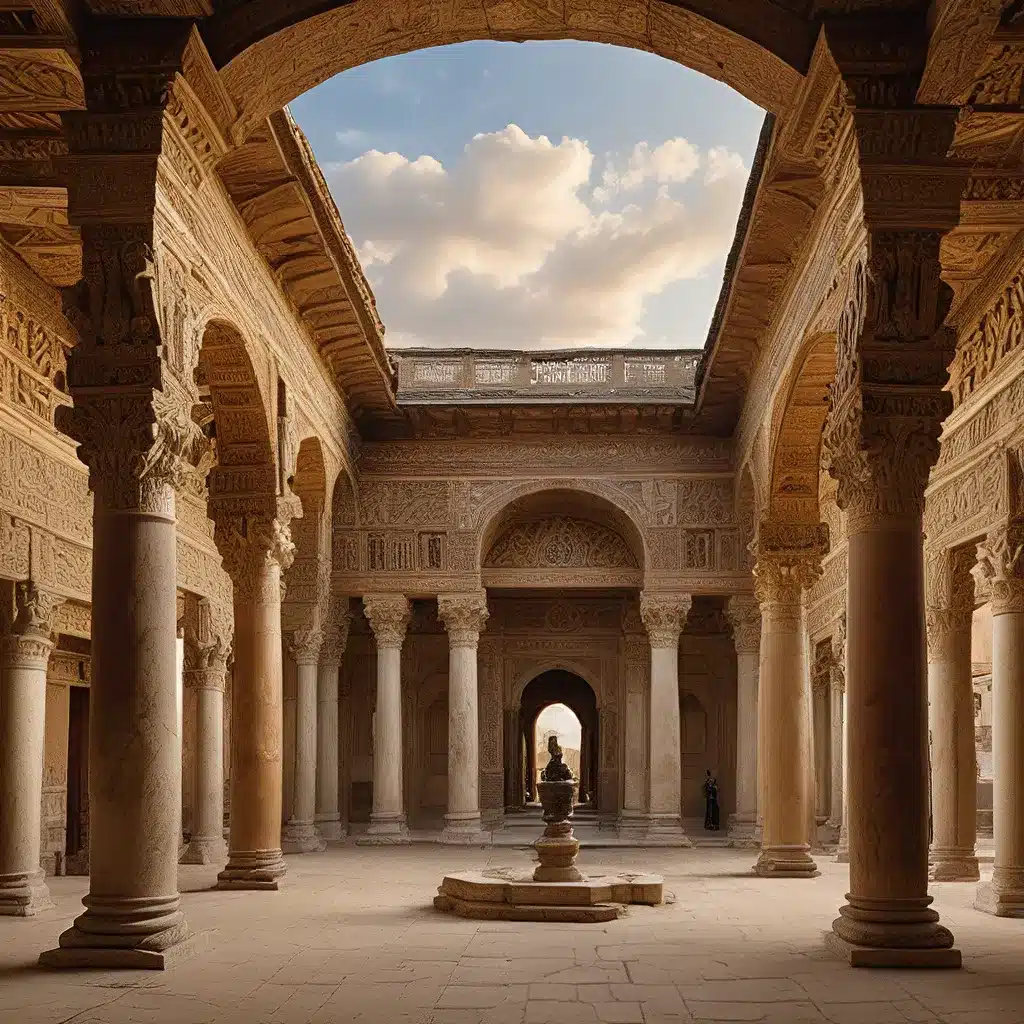
Unveiling the Mysteries of Lost Kingdoms
Across the annals of history, the grand palaces and royal domains of ancient civilizations have captured the imagination of scholars, archaeologists, and the general public alike. These monumental structures, often adorned with intricate designs and symbolic motifs, offer a tantalizing glimpse into the lives, customs, and power structures of long-vanished cultures. From the towering ziggurats of Mesopotamia to the ornate halls of the Forbidden City in China, these primal palaces stand as testaments to the ingenuity, wealth, and ambition of their former inhabitants.
One of the most remarkable aspects of these ancient royal domains is the wealth of information they can provide about the social, political, and cultural norms of their respective eras. Through meticulous excavation and analysis of architectural remains, artifacts, and written records, researchers have been able to reconstruct and interpret the complex hierarchies, religious beliefs, and economic systems that underpinned the daily lives of those who once walked these hallowed halls.
The Grandeur of Mesopotamian Palaces
The ancient civilizations of Mesopotamia, often referred to as the “Cradle of Civilization,” have long been a subject of fascination for archaeologists and historians. The region’s royal palaces, such as the renowned Nimrud and Nineveh, stand as enduring testaments to the power and ingenuity of their respective rulers.
Nimrud, the capital of the Assyrian Empire, was a sprawling complex that featured grand throne rooms, ornate reliefs, and intricate cuneiform inscriptions. Excavations at the site have uncovered a wealth of artifacts, including intricate ivory carvings, exquisite metalwork, and imposing stone sculptures. These findings have provided invaluable insights into the cultural and artistic achievements of the Assyrian people, as well as the political and economic structures that underpinned their society.
Similarly, the ancient city of Nineveh, which served as the capital of the Neo-Assyrian Empire, boasted a series of impressive palaces that were adorned with stunning wall reliefs, depicting scenes of military conquest, royal ceremonies, and mythological creatures. The sheer scale and grandeur of these structures, combined with the rich trove of artifacts uncovered at the site, have led scholars to marvel at the power and sophistication of the Assyrian civilization.
The Enigmatic Palaces of Ancient China
While the royal domains of Mesopotamia have captured the attention of many, the ancient palaces of China are equally captivating and shrouded in mystery. The Forbidden City, located in the heart of Beijing, stands as one of the most iconic and well-preserved examples of traditional Chinese imperial architecture.
Constructed over the course of several centuries, the Forbidden City was the exclusive domain of the Chinese emperor and his family, a sacred space that was off-limits to the general public. The intricate network of courtyards, pavilions, and ceremonial halls within the Forbidden City showcase the meticulous attention to detail and symbolic significance that characterized Chinese palace design.
Scholars have long been fascinated by the layers of symbolism and cosmological beliefs that are embedded within the Forbidden City’s architecture. From the precise alignment of structures to the use of auspicious colors and numerological symbolism, every aspect of the palace complex was imbued with deep cultural and philosophical meaning.
Ongoing research and conservation efforts at the Forbidden City have yielded a wealth of insights into the daily lives, rituals, and power structures that defined the Chinese imperial court. Through the study of artifacts, historical records, and architectural features, researchers have been able to piece together a nuanced understanding of the complex social and political dynamics that shaped this remarkable royal domain.
The Enduring Legacy of Ancient Palaces
The grandeur and significance of ancient royal palaces extend far beyond their physical structures. These monumental complexes serve as gateways to the past, offering us a unique window into the aspirations, beliefs, and struggles of long-vanished civilizations. By carefully studying the architectural features, artistic flourishes, and historical artifacts associated with these sites, scholars and archaeologists have been able to unravel the intricate web of cultural, social, and political forces that shaped the course of human history.
Moreover, the preservation and study of these ancient royal domains have important implications for our understanding of the present and our vision for the future. By delving into the rich histories and legacies of these sites, we can gain valuable insights into the enduring human desire for power, prestige, and cultural expression. And by sharing these stories with the wider world, we can foster a deeper appreciation for the diversity and complexity of our shared global heritage.
As we continue to explore and uncover the secrets of these primal palaces, we can’t help but be awed by the ingenuity, resilience, and sheer ambition of our ancestors. Their legacy serves as a powerful reminder of the human capacity for creativity, innovation, and transcendence – qualities that continue to shape and inspire us in the present day.
Conclusion: Embracing the Mysteries of the Past
The ancient royal domains of Mesopotamia, China, and beyond stand as enduring testaments to the ingenuity, power, and cultural richness of long-vanished civilizations. Through the meticulous study of these remarkable sites, archaeologists and historians have been able to unravel the complex social, political, and religious dynamics that once defined the lives of those who walked these hallowed halls.
As we continue to explore and interpret the secrets of these primal palaces, we can’t help but be inspired by the resilience and ambition of our ancestors. Their legacy serves as a powerful reminder of the enduring human spirit, and the vital role that cultural heritage plays in shaping our understanding of the past, present, and future.
So let us embrace the mysteries of these ancient royal domains, and use the insights they provide to deepen our appreciation for the rich tapestry of human civilization. By uncovering the grandeur and significance of these remarkable sites, we can gain a richer, more nuanced understanding of our shared global heritage, and the timeless human desire for power, prestige, and cultural expression.


